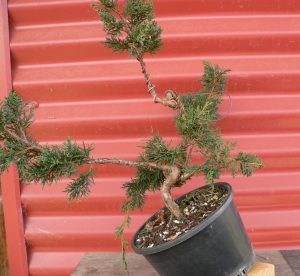 The recent workshop with Joe Morgan-Payler has re-inspired me to keep developing these small, contorted junipers.
The recent workshop with Joe Morgan-Payler has re-inspired me to keep developing these small, contorted junipers.
While not everyone appreciates this style of bonsai, especially here in Australia where our relatively mild climate does not produce such trees in the mountains, they seem to be valued by Japanese bonsai artists. These trees simulate the types of trunks that the severe winters and harsh growing conditions in the Japanese mountains naturally produce.
Grown under nursery conditions or in the garden these junipers end up with stiff, straight branches and trunks and I’ve found it difficult to produce inspiring bonsai from such material. Commercial producers have tried to get around this growth habit by winding young plants round a stake while they grow. This method is quick and easy but produces trees with a lazy corkscrew shape – better than straight but, in the end, less than inspirational.
The solution to producing better quality juniper stock seems to be early wiring to set plenty of random bends and curves into the trunk and main branches which is what I’ve been trying to do with these trees over the past 8 years.
This shimpaku juniper seems to have some potential. The combination of tight bend and straighter sections attracted my attention as a probable contender for a shohin sized bonsai.
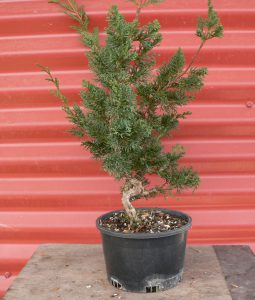
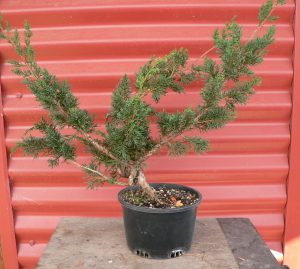
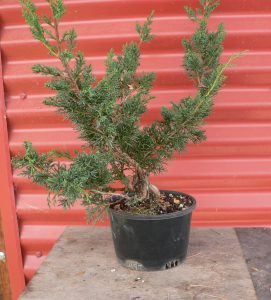
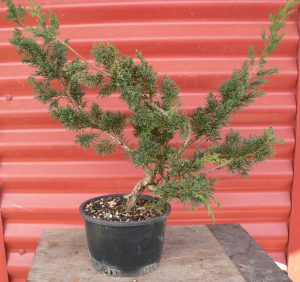
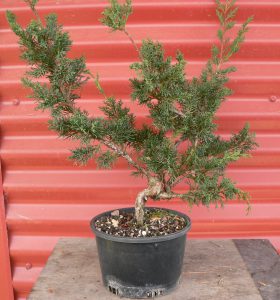 An initial appraisal of the tree selected a provisional front to work with. Note that nebari is not as important for junipers as deciduous trees so I’ve paid little attention to the roots this time.
An initial appraisal of the tree selected a provisional front to work with. Note that nebari is not as important for junipers as deciduous trees so I’ve paid little attention to the roots this time.
It may be difficult to see in the 2D photos but the trunk leans strongly toward one side so does not look good from that side. From other angles the tight bend is reduced to a swollen knob so I also rejected those viewing angles.
Remember that I’m aiming for a small bonsai from this tree so, at this stage, I’m only looking at the main trunk and just the start of any branches. Long growth has been retained to promote maximum thickening and most of it will eventually be removed.
After weighing the relative merits I’ve chosen a side which I think shows the curves and flow of the trunk to best advantage but the overall tree leans a bit strongly to the right and appears unbalanced.

Tilting the entire tree seems to give a more balanced and harmonious overall composition.
I’m planning for the larger left branch to become a short jin so I’ve removed all lower foliage from it to allow the inner branches to develop better. These will provide the final branches and foliage pads for the final design.
A couple of convenient smaller branches have provisionally been selected as probable branches and wired into position to give bends which compliment the trunk twists. Another existing small branch will provide the apex for the finished tree. Note that I’ve also removed much of the foliage from the existing apical branch. This one is also a sacrifice branch to further encourage thickening of the trunk below. I’d like to include a tall, twisted ten-jin (Japanese ‘ten’ meaning top or apex) reaching well above the foliage in this design so I’ve wired that sacrifice branch into a shape that should compliment the trunk below.
Now comes another period of waiting as this tree continues to grow and thicken. In spring I’ll repot this one into a larger grow pot to encourage the trunk to thicken a little quicker.
